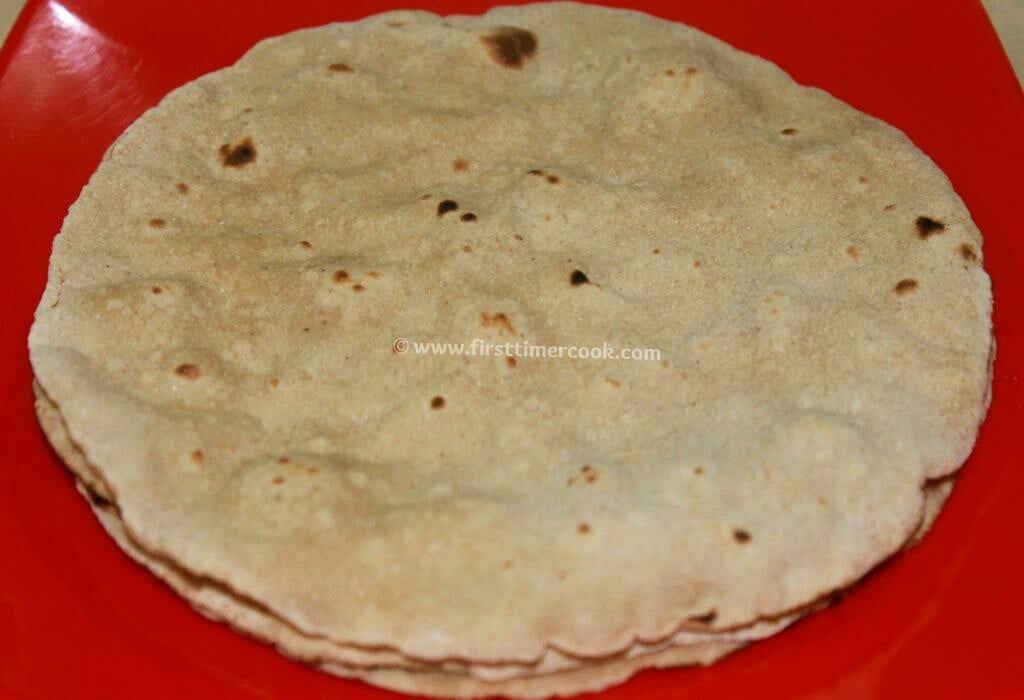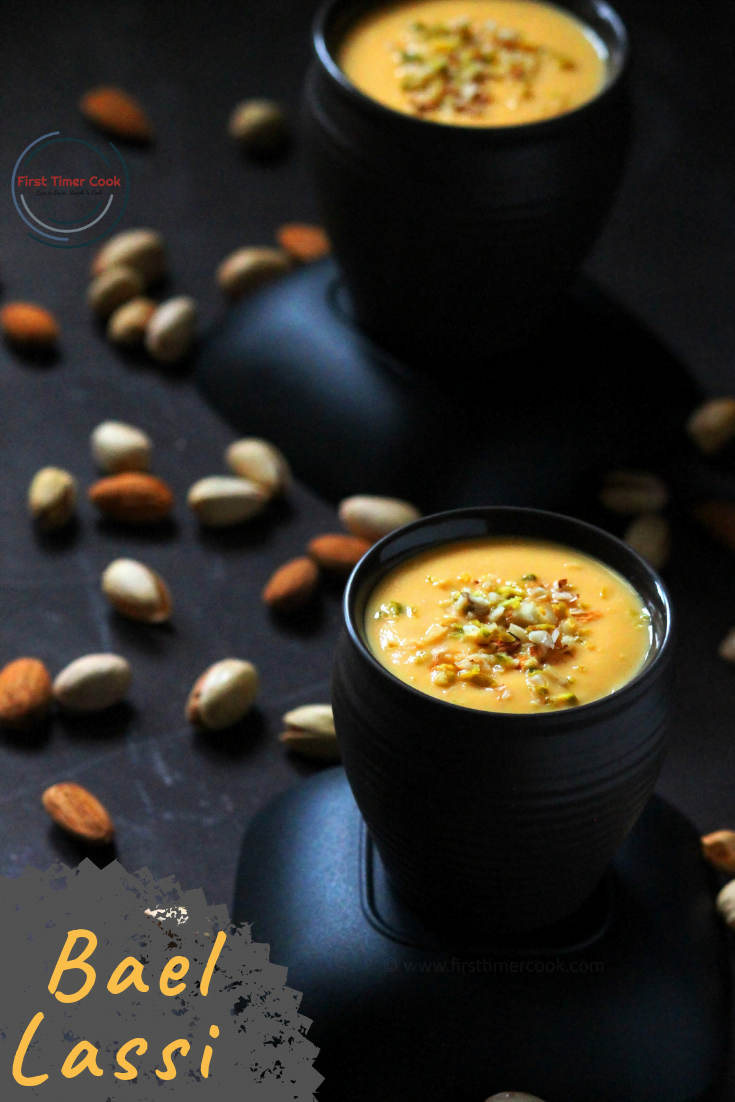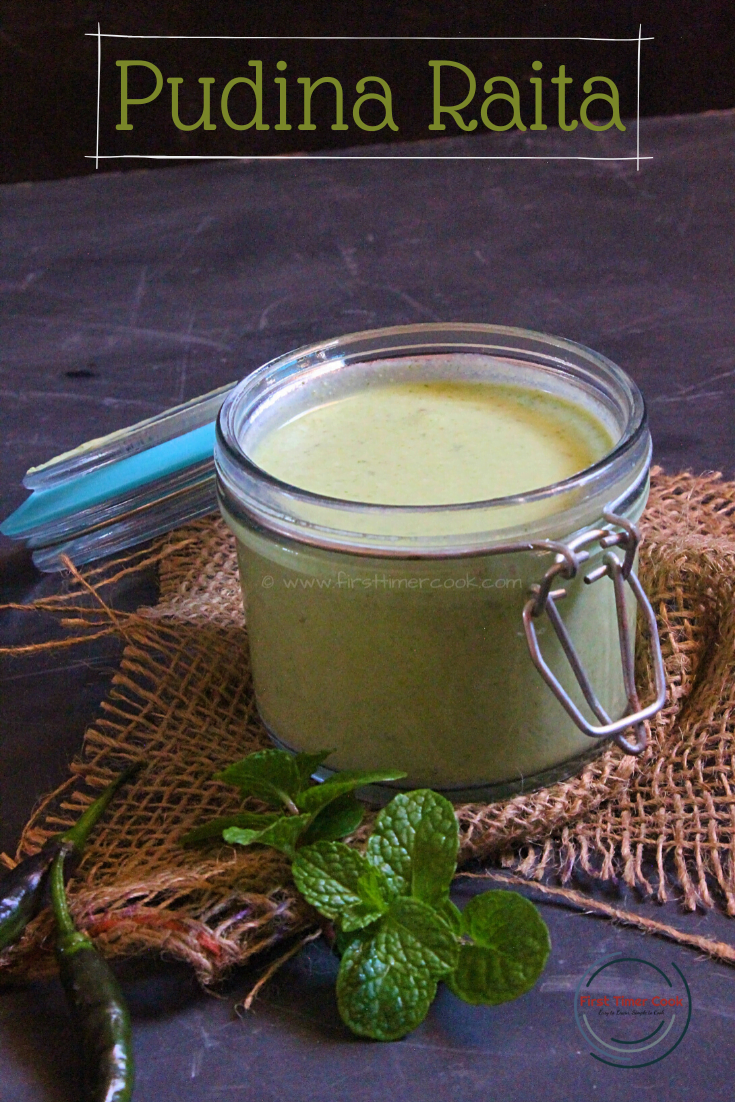Roti is a flat bread made from stone ground whole wheat flour, traditionally known as atta. It has different name as chapati / phulka. Indian food is never complete without this wonderful flat breads. It is made in almost every home of india everyday. As the rotis are made from whole wheat flour, so they are healthy and easy to digest.
Basically the wheat is finely ground. Then a dough is made by adding water, some salt and ghee / oil to the wheat flour. Thin / medium thickness disc type structure is formed after rolling the dough / just flattening by hand.
Phulka is a hindi word, which simply means to puff. Basically the roti gets puffed up when exposed to direct flame. Chapati is from a marathi word ‘chapat’ which means flat. Here the roti is flattened by hand.
So below is the recipe step by step of how to make this simple flat bread called roti at home.

Preparation Time : 15 mins | Cooking Time : 20 mins
Ingredients :
Ingredients | Measurements |
|---|---|
| Wheat flour | 1 cup |
| Oil (optional) | 2 tsp |
| Water | as needed |
| Salt (optional) | 2 pinch |
Method :
- Sieve the wheat flour using a siever, so that any impurities’ll remove from wheat flour.
- Now add a bit of water,salt and oil and start mixing. Add water to the dough little by little & begin to knead the dough.
- Knead the dough till it becomes pliable and soft. The final dough consistency should not be very soft or hard.
- Once the dough is ready, cover the dough with damp cloth and keep aside for 10 minutes to rest. After 10 min, knead once more & then divide the dough into small lemon size round balls.
- Roll the balls between both palm and make them into round shape ball. Keep aside.
- Before rolling the roti, heat an iron tawa / skillet on gas.
- Take a rolling board, place a dough ball on it, press and make flat. Dust the dough ball with some wheat flour and start rolling into 3-4 inch diameter circular disc.
- Again take the roti and dust some more wheat flour. Roll the roti again into 5-6 inch diameter circular disc.
- By now the skillet must become hot enough for roasting. Place the roti on tawa / skillet and roast for 20-30 seconds until small bubbles starts appearing on dough.
- Flip the roti and roast on other side again for 30-40 seconds until the bottom starts becoming light brown in color.
- Turn the gas on high flame and take the roti off the tawa / skillet and place it on direct flame. Roti should starts getting puffed up. Roast the roti on direct flame for 5-10 seconds and let it puffs up completely. Now flip the roti and roast the other side on direct flame just for 2-3 seconds.
- Reduce the heat and take the roti off the gas and keep them in a container that keeps food warm like a casserole / in a roti basket or wrap them up in a kitchen towel / napkin.
- Repeat the rolling & roasting steps and make remaining rotis. Serve the delicious roti hot with any vegetable curry / dal !
Notes :
- While kneading the dough, add little water at a time and mix the water with flour. Do not add too much water at once as it might make the dough soft, sticky and difficult to handle later.
- Adding oil helps in making soft rotis, so add 1-2 tsp of oil in the dough.
- Always avoid kneading the dough hard.
- If planning to make roti for the first time, then do not roll them very thin. Let them remain little thicker so that they easily get puffed up.
- Flip the roti only once on tawa / skillet and roast either side only once. Flipping repeatedly might make roti hard.
- A perfectly rolled roti will puff up nicely on flame. Flame should be high so that it puffs up roti quickly without making it hard.
- Turn the flame to high before placing roti on direct flame. If the flame is not on high, then roti might not puff up perfectly.
- Use a cotton cloth / kitchen napkin to keep the roti. This way the cloth will absorb any moisture coming out of roti. The lower most roti will not become soggy this way.
- If rotis are kept in open, then they will get hard / crispier. So be careful !




